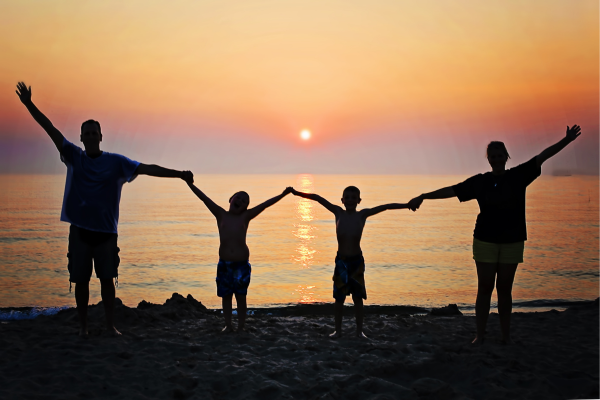Family and Social Structure in Sri Lankan Culture: A Blend of Tradition and Modernity – By eLanka

Introduction: Sri Lanka, a nation with a rich tapestry of cultures and traditions, boasts a social structure deeply rooted in its history and influenced by both tradition and modernity. Within this framework, the family unit plays a central role, serving as the cornerstone of society. In this article, we delve into the intricate interplay between tradition and modernity within Sri Lanka’s family and social structure, exploring how these dynamics shape the fabric of everyday life.
Tradition: At the heart of Sri Lankan culture lies a reverence for tradition, passed down through generations. The family is traditionally seen as an extended network encompassing not only immediate relatives but also distant kin. Respect for elders and authority is deeply ingrained, with hierarchical relationships guiding familial interactions. Arranged marriages, although less prevalent in urban areas, still hold sway in many parts of the country, reinforcing familial ties and preserving cultural heritage. Moreover, the concept of duty and obligation towards family members is paramount, with individuals expected to prioritize the collective welfare over personal aspirations.
Social Roles and Gender Dynamics: Within the traditional framework, distinct gender roles dictate societal expectations and behaviors. While men are often regarded as the primary breadwinners, responsible for providing financial support and upholding the family’s honor, women are typically assigned domestic duties, nurturing the household and ensuring familial harmony. Despite these entrenched roles, modern influences have gradually permeated Sri Lankan society, catalyzing shifts in gender dynamics. Increasingly, women are pursuing education and careers outside the home, challenging traditional norms and asserting their autonomy. This transition has led to greater gender equality and empowered women to redefine their roles within the family and society at large.
Modern Influences: In tandem with globalization and economic development, modern influences have begun to reshape Sri Lanka’s social landscape. Urbanization has led to nuclear family structures becoming more prevalent, as individuals seek greater independence and mobility. The advent of technology, particularly social media, has facilitated connections beyond geographical boundaries, enabling families to maintain relationships despite physical distances. Moreover, changing attitudes towards marriage and relationships have resulted in a greater emphasis on personal compatibility and mutual consent, deviating from the strictures of arranged marriages.
Challenges and Adaptations: While the fusion of tradition and modernity has brought about significant societal changes, it has also presented challenges to the traditional fabric of Sri Lankan culture. Generational gaps in values and beliefs have emerged, as younger generations embrace progressive ideals while older generations cling to traditional customs. Moreover, socioeconomic disparities exacerbate existing tensions, with urban elites embracing modern lifestyles while rural communities adhere more closely to tradition. However, amidst these challenges, Sri Lankan families exhibit remarkable resilience, adapting to changing circumstances while preserving the essence of their cultural heritage.
Conclusion: In conclusion, the family and social structure in Sri Lankan culture embody a delicate balance between tradition and modernity. While rooted in centuries-old customs and beliefs, these structures have evolved in response to shifting societal norms and global influences. The coexistence of tradition and modernity has enriched Sri Lankan society, fostering resilience and adaptability in the face of change. As the nation continues on its developmental trajectory, the preservation of familial bonds and cultural values remains paramount, ensuring that the unique blend of tradition and modernity continues to define the fabric of Sri Lankan identity.





